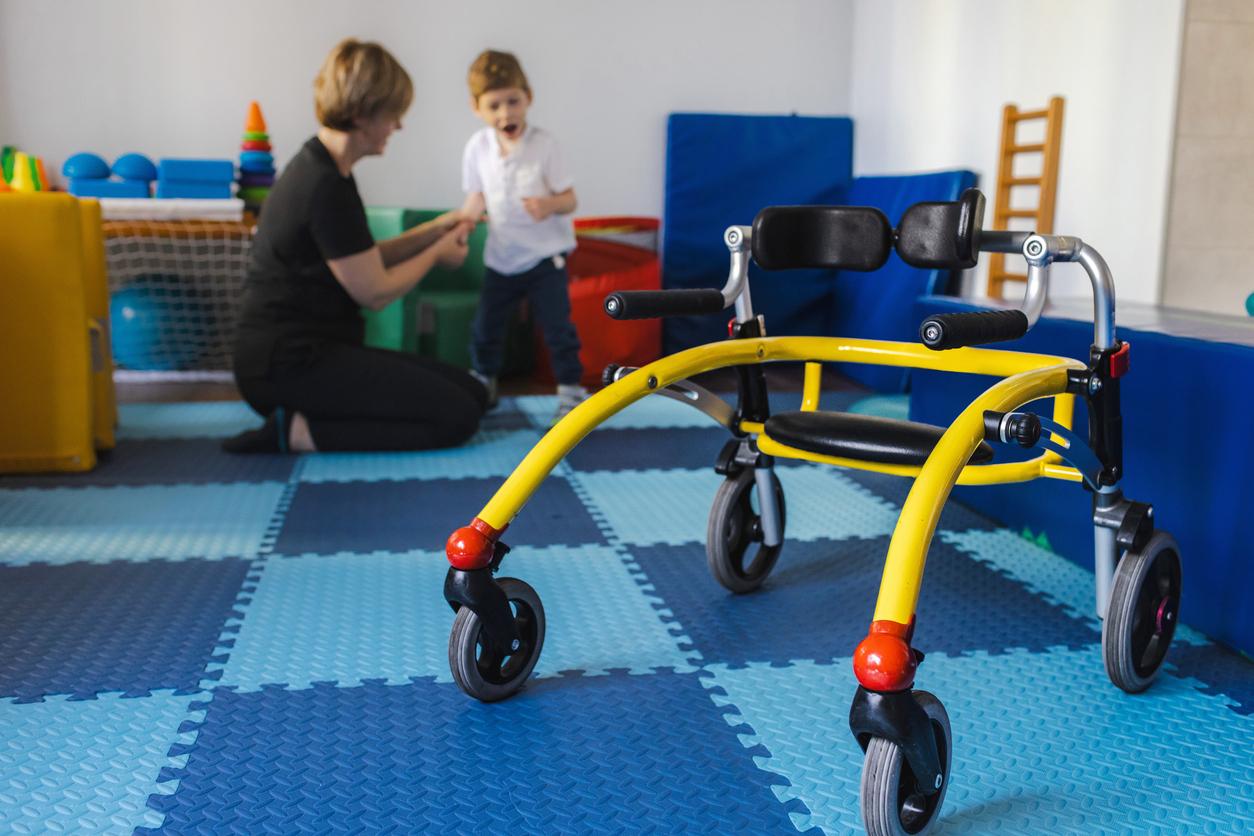A Dutchman, paralyzed for more than ten years, managed to walk again by controlling the movement of his legs by thought thanks to a brain implant.

- A man who has been paraplegic for twelve years can now walk again.
- He is equipped with a brain implant that allows him to control his movements by thought.
- The device works thanks to a computer and different algorithms.
He walks again after twelve years of paralysis. Gert-Jan Oskam, a 40-year-old Dutchman, became a paraplegic after a serious fall from a bicycle that damaged his spinal cord in the neck. Since then, he has lived with his legs completely paralyzed and his arms partially. But today he can walk again, simply by the force of his mind.
Paraplegia: the implant allows you to act on the nerves located under your injuries
A research team from the Ecole polytechnique fédérale de Lausanne (EPFL) has designed a brain implant that allows him to control the movement of his legs again. “We have developed a wireless digital bridge between the brain and spinal cord using Brain-Computer Interface (BCI) technology that turns thought into action.”, summarizes Grégoire Courtine, professor of neurosciences at EPFL, at the Vaud University Hospital Center and the University of Lausanne. The device makes it possible to act on the nerves located under his wounds. In 2018, this researcher’s previous work had shown that, combined with intensive training, technology that stimulates the lower spine with electrical impulses can help people with spinal cord injuries to walk again. .
A connection between the brain and the nerves to walk again
Gert-Jan Oskam had participated in this first trial, but after three years, he saw no further improvements. “The new system uses the spinal implant that Oskam already has and combines it with two disc-shaped implants inserted into his skull so that two 64-electrode grids rest against the membrane covering the brain.”specifies the EPFL in a communicated. If the 40-something thinks about walking, then the cranial implants detect electrical activity in the cortex, the outer layer of the brain. “This signal is transmitted wirelessly and decoded by a computer that Oskam carries in a backpack., indicates the text. The system works through algorithms based on artificial intelligence methods. “Movement intentions are thus decoded in real time from brain recordingsdevelops Guillaume Charvet, head of the BCI program at the Center for Nuclear Studies in Grenoble, who developed the device. These intentions are then converted into spinal cord electrical stimulation sequences, which in turn activate the leg muscles to achieve the desired movement.”
Paraplegia: “he can stop, he can walk, he can climb stairs”
The main innovation of this new system lies in the control. “The stimulation used to control me and now I control the stimulation by my mind”, explains Gert-Jan Oskam. The previous implant was a kind of stimulation, pre-programmed, allowing to generate walking movements a little “robotics”. “Now it’s completely different because Gert-Jan has full control over the stimulation parameter, which means he can stop, he can walk, he can climb stairs.”, adds Grégoire Courtine. Around 40 rehabilitation sessions helped him recover and familiarize himself with the system. Today Gert-Jan Oksam can even cover short distances without the device if he has crutches. He says that this system allowed him to gain autonomy and rediscover old habits, such as having a beer at the bar with his friends. “This simple pleasure represents an important change in my life“, he confides.

















